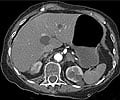If ‘kicking the butt’ (as they call it) is not your cup of tea, you’ve still got a chance to escape the health hazards of smoking. Researchers are working on a ‘magic pill’ that may let you smoke while it alleviates your cigarette’s negative health effects.
Boston University School of Medicine researchers have found 28 molecules, which are produced in abnormal amounts in cells lining the airways of smokers.If the levels of these molecules could be restored to that of non-smokers it might allow chronic smokers who have been unable to quit to improve their health prospects, reports New Scientist.
It might also enable people to smoke without significant damage to their health.
To reach the conclusion, lead researcher Avrum Spira and his colleagues took samples of cells from the airways of 10 smokers and 10 non-smokers and identified 28 microRNAs - molecules that control the expression of whole networks of related genes - that were perturbed in the smokers.
"These microRNAs serve to regulate the gene expression changes occurring in people who smoke and who get smoking related diseases, including cancer," says Spira.
One of these microRNAs, called mir-218, appears to control a group of genes that usually protect lung and airway cells from the oxidative damage caused by smoke.
Advertisement
Other microRNAs identified help to regulate the proliferation and growth of airway cells.
Advertisement
"We might be able to alter the host's response to tobacco smoke so that it is a protective one," says Spira.
The study has been published in the journal Proceedings of the National Academy of Science.
Source-ANI
TAN














